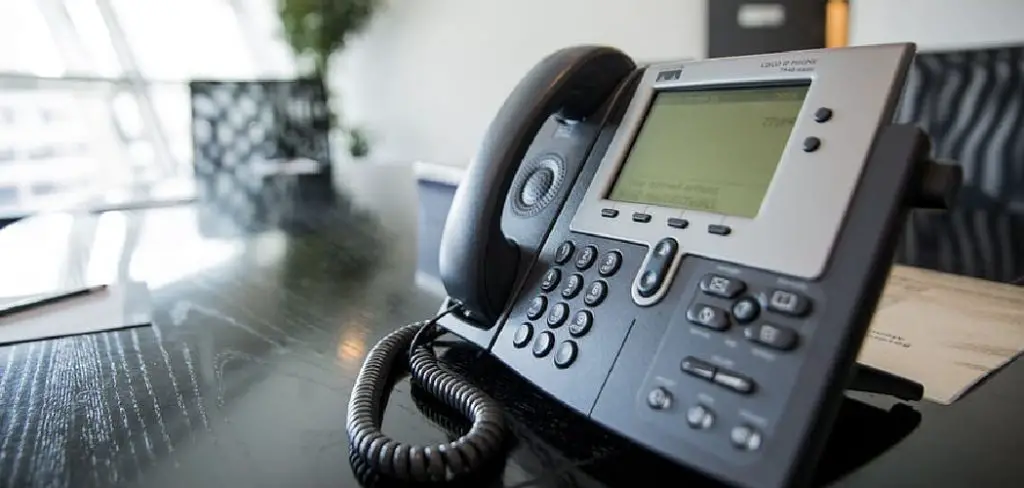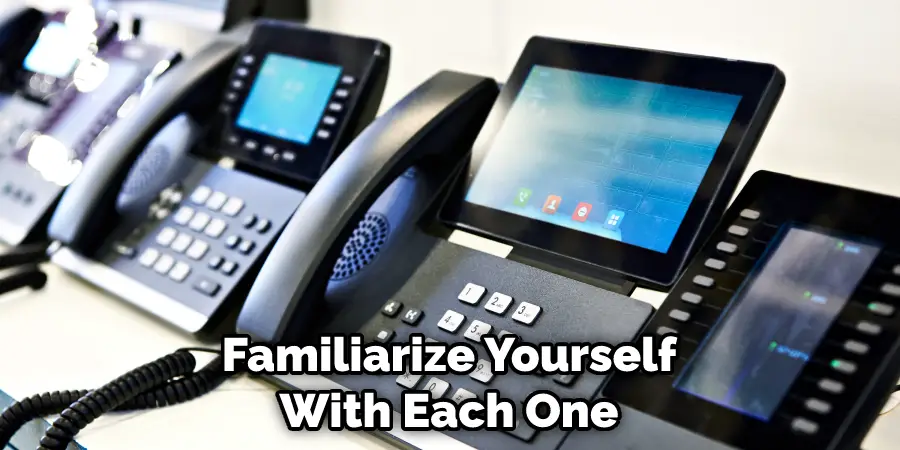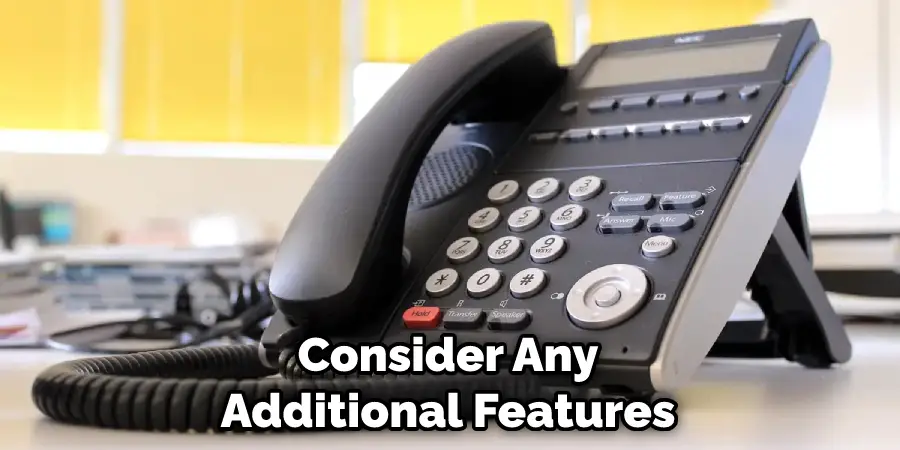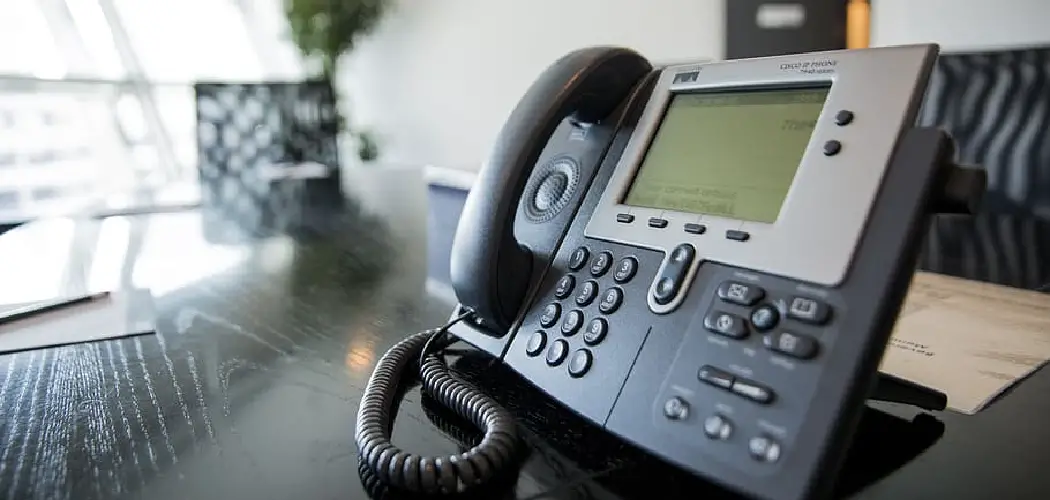Are you a business owner having trouble setting up an office phone system? With the many different options available, choosing the right setup can be a confusing and overwhelming process.

This blog post provides an overview of key components involved in building your own office phone system as well as tips on how to ensure a successful installation. Read on to learn more about how to set up office phone system for your business!
Step-by-Step Guidelines on How to Set Up Office Phone System
Step 1: Choose the Right Office Phone System
The first step to setting up your office phone system is to choose the type of system that works best for your business needs. Consider factors like company size, budget, features desired, and user experience requirements when making this decision. Some popular options include VoIP systems, PBX systems, and key telephone systems.
Step 2: Set Up the Equipment
Once you’ve chosen the right office phone system for your business, it’s time to set up the necessary equipment. This includes connecting all the phones and other components together as well as properly configuring the system to work with your internet connection. You may also need to purchase additional equipment such as headsets and telephone cords.
Step 3: Program the Phone System
The next step is to program your office phone system with all the settings you need for it to work properly. This includes configuring extensions, setting up voicemail boxes, assigning ringtones, and so on. Consult your user manual or contact your phone system provider for assistance if needed.
Step 4: Train Employees

Once your office phone system is set up and programmed, it’s time to train your employees on how to use the new system. This includes teaching them basic functions like setting up call forwarding, programming voicemail boxes, transferring calls, and other features.
Training your staff ensures everyone is comfortable with the new phone system and can maximize its features.
Step 5: Test the System
Before your office phone system goes “live”, it’s important to conduct a thorough test of all the components. This will help identify any problems or issues that need to be addressed before you start using the new system. Once everything is running smoothly, you’re ready to start making calls!
By following these steps, you can quickly and easily set up your office phone system with minimal effort. With the right setup, you’ll be able to enjoy all the benefits of modern communication that come with a reliable and efficient business phone system. Good luck!
Additional Tips and Tricks to Set Up Office Phone System

- Before setting up the phone system, it is important to decide on a budget for the purchase of equipment and services. This will help narrow down the choices when shopping for a system.
- Once you have decided on a budget, consider what features you need in a phone system. For example, if you are looking for a more professional look and feel, you should consider going with an IP-based system.
- When selecting a service provider, make sure to research their reliability and customer service before signing up.
- If possible, use CAT 5e cable instead of regular telephone cables when connecting the phone system. This will ensure that the connection is faster and free of interference.
- Choose a phone system with user-friendly features such as call forwarding, caller ID, and voicemail. This will make it easier for your employees to use the system and provide them with an efficient way to communicate.
- Make sure to take advantage of any training sessions offered by the service provider. This will ensure that your employees are familiar with how to use their new phone system.
- If you have multiple offices, consider using a virtual PBX system to unify all of your locations into one single system.
- Ensure that all employees are aware of any policies regarding the usage of cell phones in the workplace. This will help to minimize distractions and optimize productivity.
- Finally, be sure to monitor the system regularly to ensure that it is running smoothly and efficiently. By doing so, your employees can enjoy a reliable phone system with minimal downtime.
Following these tips and tricks will make setting up your office phone system easy and hassle-free. With the right setup, you can ensure that your employees have a reliable, efficient, and secure phone system to use for communications.
Things You Should Consider to Set Up Office Phone System
1. Establish the Purpose of Your Phone System:
When you are looking to set up a phone system for an office, it is important to consider the purpose of the system. Are you trying to facilitate better communication between staff members?
Do you need a system that will allow customers and clients to easily contact the company? Are there features that are necessary for the phone system to support? Knowing what your primary purpose is will help you determine the features your office phone system needs.
2. Familiarize Yourself With Different Phone System Types:

There are a variety of different types of office phone systems and it is important to familiarize yourself with each one before making a decision. The two main types of phone systems are PBX (private branch exchange) and VoIP (Voice Over Internet Protocol). Both offer advantages but it is important to choose the type that works best for your office.
3. Consider Budgetary Restrictions:
When setting up an office phone system, it is important to consider budgetary restrictions. Depending on the type of system you go with, as well as any additional features you want to include, the cost can add up. Do research ahead of time to familiarize yourself with the different systems and costs associated with them in order to make an informed decision.
4. Think About Scalability:
It is also important to consider scalability when setting up an office phone system. Depending on the size of your business and how quickly it is growing, you may need a system that can easily add new lines and users with minimal effort. Consider whether or not the chosen system will be able to support future growth and adjust accordingly.
5. Choose Additional Features:

In addition to the type of system and scalability, it is important to consider any additional features you may want.
Features such as conference calling, voicemail-to-email forwarding, call routing, and call recording are just a few that can make your office phone system more efficient for both staff and customers.
These features can be added to most systems but should be taken into consideration when making a decision.
By considering these factors, you can ensure that the office phone system you choose is the right one for your business. With an efficient and reliable phone system in place, your staff will be able to communicate effectively with clients and customers and provide them with the best service possible.
Precautions Need to Follow for Setting Up Office Phone System
- Familiarize yourself with the phone system. Before setting up your office phone system, it is important to familiarize yourself with all of its features and functions. Read the instructions or consult a technician if needed.
- Invest in quality equipment. In order to ensure that your office phone system works properly, investing in quality equipment is essential. Be sure to purchase a system that will meet all of your needs and requirements.
- Set up the physical hardware correctly. After you have purchased your phone system, it is important to install the physical hardware correctly. Make sure all cables are connected properly and set up any necessary additional features such as voicemail or an answering machine.
- Configure the system settings. Once the physical hardware is set up, you will need to configure the system settings. These settings may include setting up an automated attendant, voicemail greetings, and programming each extension with its own number and features.
- Test the system regularly. After you have set up your office phone system, it is important to test it regularly. Check for any static or interference and make sure that all of the features are working properly.
By taking these precautions, you can ensure that your office phone system will run smoothly and efficiently. Setting up an office phone system does not have to be a daunting task – with the right preparation and knowledge, your office phone system will be up and running in no time.
Frequently Asked Questions
What Are the Advantages of an Office Phone System?

An office phone system is advantageous because it allows for smoother communication between employees and customers. It also helps businesses save on costs by consolidating multiple lines into one, allowing users to make calls more efficiently.
Additionally, an office phone system can provide features such as call forwarding, voicemail, and conference calling.
What Are the Different Types of Office Phone Systems?
There are many different types of office phone systems available. The most common type is a VoIP (Voice over Internet Protocol) system. This type of system allows for calls to be made over an existing internet connection instead of using dedicated lines. Other types of office phone systems include PBX (Private Branch Exchange), analog, and digital systems.
What Is the Best Way to Set Up an Office Phone System?
The best way to set up an office phone system depends on your individual needs. If you have a large number of employees or customers using the system, then a VoIP system may be a good choice. For smaller offices, an analog or digital system may be more appropriate.
It is also important to consider features such as call forwarding and voicemail when choosing the best office phone systems. Additionally, you should always consult with a professional to ensure that your office phone system is set up correctly.
Conclusion
Congratulations! By now, you should have enough knowledge on how to set up office phone system and the different types of systems available. You no longer need to worry about your team’s communications going awry as everything should be in perfect working order.
Don’t forget to test the system again after a few days of use, just in case you need to make any adjustments. One suggestion would be to back up your settings on a regular basis so you can refer back to them if needed.
Thanks for taking the time to get your new phone system set up – now you can focus on building the rest of your business and expanding it. Communication is key when bridging together multiple projects, so having a reliable phone system in place will let you move forward without any concerns.
Take advantage of this new technology by making sure that all of the settings are calibrated properly for optimal efficiency. Happy calling!
You Can Check It Out Decorate an Office at Work With No Windows

